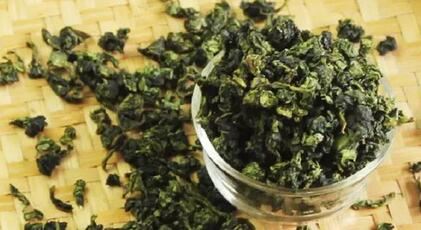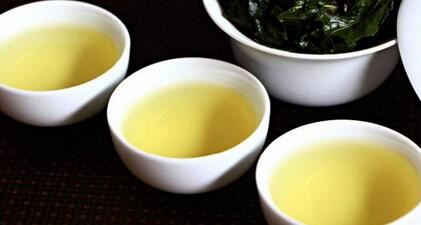The fragrance of Tieguanyin has spread globally and is deeply loved by friends from all over the world. However, some Tea enthusiasts have misunderstandings about Tieguanyin, believing that it can upset your stomach! This is not necessarily true. Today, we will discuss the production process and clarify that Tieguanyin does not upset your stomach!

The production process of Tieguanyin has quietly undergone many changes, which many tea enthusiasts are not fully aware of. There are several types of processes, and now we will clearly explain the processes of Tieguanyin: The Tieguanyin variety possesses noble lineage and fully aligns with the discussion of tea varieties in the Tea Classic a thousand years ago: “Purple is best, green is second.”
1. Lightly Fermented Fresh-Scented Tieguanyin
The Tieguanyin currently popular outside of Fujian Province should be accurately called: Lightly Fermented Fresh-Scented Tieguanyin. Its characteristics are closer to those of Green Tea, with a greener color. Therefore, if you drink this type of Tieguanyin long-term, it may cause some damage to your stomach. When drinking green tea, you would be mindful of its potential to upset your stomach, but because this Tieguanyin is similar to green tea, enthusiasts may also assume it has the same effect.
2. Semi-Fermented Fresh-Scented Tieguanyin
This is sometimes called Properly Stirred Tieguanyin or Original Flavor Tieguanyin. The tea entered into competitions is based on this process. This type of tea is neutral and will not upset your stomach; it also has excellent weight-loss effects and is in high demand at its origin. Producing this process of Tieguanyin requires high-quality fresh leaves, ideal weather conditions for picking, a suitable growing environment, and skilled tea makers. Due to the lower yield, the price of properly stirred Tieguanyin is higher, and only connoisseurs can truly appreciate the orchid fragrance and the unique character of Tieguanyin. Semi-fermented teas exhibit a brownish hue interspersed with sand-green, resembling the head of a dragonfly and the legs of a frog, with relatively uniform size.
3. Lightly Roasted Rich-Scented Tieguanyin
Sometimes referred to as Traditional Aroma Tieguanyin or Flavorful Aroma Tieguanyin. The aroma of this process of Tieguanyin is generally mild but full of flavor. It can be stored naturally without the need for freezing or refrigeration. The nature of this Tieguanyin has become more gentle, allowing it to help regulate digestive functions and nourish the stomach instead of upsetting it. If stored properly, this tea can be kept for a long time, and the quality of the tea leaves will become richer, enhancing their Health benefits.
4. Heavily Roasted Rich-Scented Tieguanyin
This can also be made by re-roasting aged teas, but it cannot be made from aged lightly fermented Tieguanyin. This process of Tieguanyin has a yeast-like aroma, which some call sauce-like. When you smell it, your mouth naturally produces saliva, and tasting it reveals a rich flavor. This tea is fully matured, like black tea, dark tea, Pu'er, aged White Tea, and can help nourish the stomach and promote health. In tea-producing regions, this tea is often stored for a long time. After fifteen years, it is re-roasted and placed in ceramic jars with pure natural honey. It is said to be a curative tea for various ailments, specifically recommended for children and pregnant women. Regardless of whether it can cure all illnesses, it has been confirmed to help expel accumulated gas in the abdomen and regulate digestive functions.

In summary, there is no inherent issue of Tieguanyin upsetting the stomach; it's just that the production process has changed. The tea progresses from unfermented, which can upset the stomach, to semi-fermented, which doesn't, and finally to fully fermented, which can nourish the stomach. This transition occurs as the nature of the tea changes from cool when unfermented to warm when fully fermented. Therefore, Tieguanyin should not be labeled as stomach-upsetting due to the lightly fermented fresh-scented production process. When choosing tea, if we select according to our own physical condition, we can choose the most suitable Tieguanyin for ourselves, achieving “scientific tea selection.”
However, one point must be emphasized: Choosing lightly fermented fresh-scented Tieguanyin is akin to choosing green tea, and it should be consumed in the same manner as green tea.
In conclusion: Tieguanyin itself does not inherently upset the stomach, especially as it is returning to traditional methods. We believe the return of high-quality Tieguanyin will bring more pleasant surprises and enjoyment to enthusiasts who love Anxi Tieguanyin!